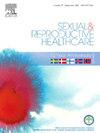Women experiencing the second stage of labour for the first time: A qualitative free-text analysis within the Oneplus trial
IF 1.7
3区 医学
Q3 PUBLIC, ENVIRONMENTAL & OCCUPATIONAL HEALTH
引用次数: 0
Abstract
Title
Women experiencing the second stage of labour for the first time: a qualitative free-text analysis within the Oneplus trial.
Background
The second stage of labour is the time from full cervical dilation to the birth of the baby. The risks to the woman and the baby are increased during this stage, leading to intensified midwifery care. A positive birth experience is a significant goal of intrapartum care and it is important to investigate how women experience the second stage of labour in particular.
Aim
The aim was to explore women’s experiences of the second stage of labour in their first vaginal birth.
Methods
This qualitative study analysed data from the Oneplus trial’s one-month postpartum follow-up questionnaire. The questionnaire included an open-ended question about the second stage of labour and the free-text answers were analysed using inductive and manifest qualitative content analysis.
Results
The open-ended question was answered by 865 women and three categories emerged. In the first category, women described their physical and emotional sensations during this stage. The other two categories concerned women’s relationship with midwives. The relationship was a major contributor to a positive experience but also had the opposite potential. Midwives’ use of instructions mostly regarded pushing technique. When women were given instructions, it could lead to feelings of blame instead of accomplishment.
Conclusions
The result showed the essentiality of midwifery care during the second stage of labour, as it contained both emotional support and guidance which affected the women’s experiences positively. The experience of being instructed by the midwife during the second stage of labour is more complex and needs further research.

第一次经历第二阶段分娩的妇女:一加试验中的定性自由文本分析
第一次经历第二阶段分娩的妇女:一加试验中的定性自由文本分析。分娩的第二阶段是从宫颈完全扩张到婴儿出生的时间。在这一阶段,妇女和婴儿面临的风险增加,因此需要加强助产护理。积极的分娩体验是分娩期护理的一个重要目标,调查妇女如何体验分娩的第二阶段尤其重要。目的探讨妇女在第一次阴道分娩时第二产程的经历。方法采用质性研究分析一加试验产后1个月随访问卷的数据。问卷包括一个关于第二阶段劳动的开放式问题,并使用归纳和明显定性内容分析的自由文本答案进行分析。结果865名女性回答了这个开放式问题,并将其分为三类。在第一类中,女性描述了她们在这一阶段的身体和情感感受。另外两个类别涉及妇女与助产士的关系。这种关系是积极体验的主要贡献者,但也有相反的潜力。助产士使用的指导主要是推法。当女性接受指示时,可能会产生责备感,而不是成就感。结论第二产程助产护理的重要性,包括情感支持和指导,对产妇的体验有积极的影响。在产程第二阶段由助产士指导的经验更为复杂,需要进一步研究。
本文章由计算机程序翻译,如有差异,请以英文原文为准。
求助全文
约1分钟内获得全文
求助全文
来源期刊

Sexual & Reproductive Healthcare
PUBLIC, ENVIRONMENTAL & OCCUPATIONAL HEALTH-
CiteScore
2.70
自引率
5.60%
发文量
73
审稿时长
45 days
 求助内容:
求助内容: 应助结果提醒方式:
应助结果提醒方式:


